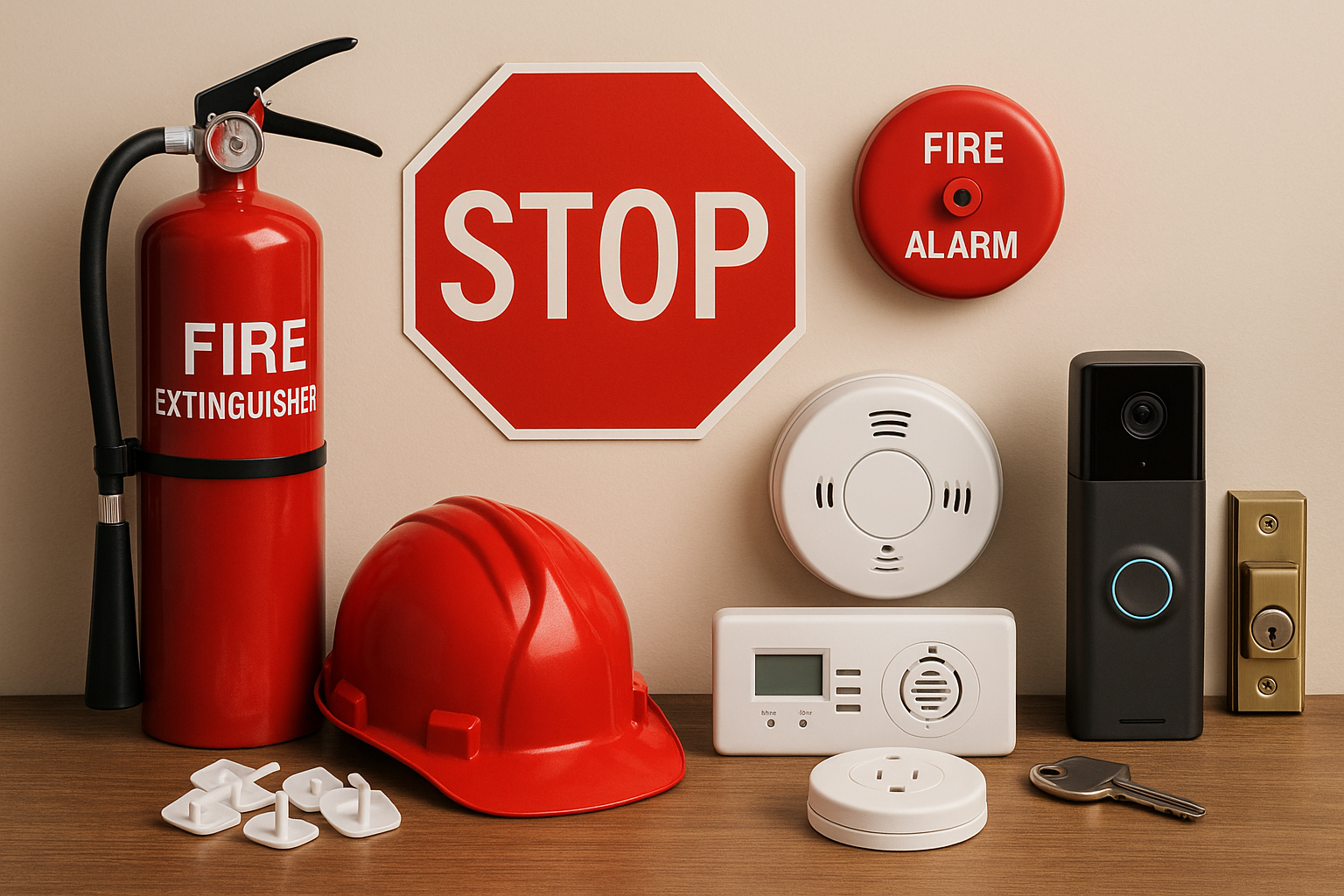A home should be a safe haven—a place where you and your loved ones can relax without worrying about unnecessary risks. However, many households unknowingly overlook important safety upgrades that could prevent accidents, deter intruders, and safeguard property. From fire prevention to digital security, thoughtful improvements can make your home safer, more comfortable, and more resilient against emergencies.
Investing in safety upgrades isn’t just about avoiding worst-case scenarios; it’s about creating peace of mind. Whether you live in an apartment, townhouse, or single-family home, the following safety improvements can help protect you and your household year-round.
Evaluating Your Home’s Current Safety
Before making upgrades, start by assessing your current setup. Walk through each room and look for potential hazards:
- Are smoke detectors and carbon monoxide alarms working and up to date?
- Do doors and windows have secure locks?
- Is there clutter blocking exits?
- Are hazardous materials stored safely?
Taking inventory helps prioritize what needs attention first. You might discover that some areas require immediate fixes while others can be scheduled for gradual improvement.
Fire Safety Upgrades
Fire prevention is one of the most critical aspects of home safety. Small, affordable upgrades can significantly reduce the risk:
Install or Update Smoke Detectors
Every level of your home should have smoke detectors, ideally in each bedroom and hallway. Modern smart detectors can send alerts to your phone, even if you’re away. Replace batteries twice a year and test units monthly.
Add Carbon Monoxide Alarms
Carbon monoxide is invisible and odorless, making it especially dangerous. CO alarms should be installed near sleeping areas and on every floor. Combination smoke/CO detectors are a convenient option.
Keep Fire Extinguishers Accessible
Have at least one multi-purpose fire extinguisher in the kitchen and another near high-risk areas like the garage. Learn how to use them, and check expiration dates regularly.
Consider a Home Sprinkler System
While more of an investment, residential sprinkler systems can quickly contain fires before they spread, saving lives and property.
Security Against Intruders
A secure home deters break-ins and helps you feel more comfortable, especially at night or when you’re away.
Upgrade Door and Window Locks
Deadbolt locks provide more security than standard latch locks. Reinforcing door frames and adding window locks can further discourage intruders.
Install a Video Doorbell or Security Cameras
Smart video doorbells let you see and speak to visitors remotely, while security cameras provide surveillance and evidence in case of incidents. Choose weather-resistant, high-resolution models with night vision.
Use Outdoor Lighting Strategically
Motion-sensor lights near entry points illuminate unexpected movement, discouraging trespassers. Solar-powered options are energy-efficient and easy to install.
Secure the Garage
The garage is a common entry point for burglars. Ensure side doors are locked, windows are covered, and the main door has an updated locking mechanism.
Electrical and Appliance Safety
Outdated wiring and faulty appliances can pose serious hazards.
Schedule an Electrical Inspection
If your home is older or you’ve noticed flickering lights and tripped breakers, a licensed electrician can assess and update your wiring to prevent fires.
Use Surge Protectors
Surge protectors safeguard electronics from power spikes caused by storms or grid issues.
Replace Damaged Cords and Outlets
Frayed cords and loose outlets can overheat and start fires. Replace them promptly and avoid overloading power strips.
Childproofing and Family Safety
If you have young children or expect visits from family and friends with kids, childproofing is essential.
Install Safety Gates and Cabinet Locks
Safety gates block access to stairs, while cabinet locks keep children away from cleaning supplies, medications, and sharp objects.
Anchor Heavy Furniture
Bookshelves, dressers, and TVs should be anchored to the wall to prevent tipping accidents.
Cover Electrical Outlets
Outlet covers are inexpensive and prevent curious fingers from touching live wires.
Emergency Preparedness
Preparedness is as important as prevention.
Create and Practice an Escape Plan
Every household member should know at least two ways out of every room and where to meet outside. Practice the plan twice a year.
Keep Emergency Supplies Stocked
A well-stocked kit includes water, non-perishable food, flashlights, batteries, a first-aid kit, blankets, and important documents.
Have a Backup Power Source
Generators or battery backup systems can keep essential devices running during outages.
Digital Security Upgrades
Home safety extends beyond physical boundaries. Cybersecurity helps protect your personal information and smart devices.
Secure Your Wi-Fi Network
Use strong passwords and enable WPA3 encryption to keep hackers out.
Update Device Firmware Regularly
Smart home devices need security updates just like computers and phones.
Use Two-Factor Authentication
Adding an extra step to logins makes it harder for attackers to access accounts, especially those connected to home automation.
Outdoor and Environmental Safety
Your property’s exterior plays a role in overall safety.
Maintain Walkways and Steps
Repair cracks and uneven surfaces to prevent trips and falls.
Install Fencing or Gates
Fencing can keep pets and children safe while providing an extra layer of security.
Manage Landscaping for Visibility
Trim bushes near entryways to eliminate hiding spots for intruders.
Maintaining Your Safety Upgrades
Once you’ve made safety improvements, keep them effective with regular maintenance:
- Test alarms monthly.
- Review security footage periodically.
- Replace expired supplies in emergency kits.
- Reassess safety measures annually or after major home changes.
Final Thoughts
A safer home doesn’t require overwhelming changes—just consistent attention to both obvious and hidden risks. By addressing fire safety, security, electrical hazards, childproofing, preparedness, and even digital protection, you create an environment where you and your loved ones can live with greater peace of mind. These upgrades not only protect your household but also enhance your home’s long-term value and livability.

